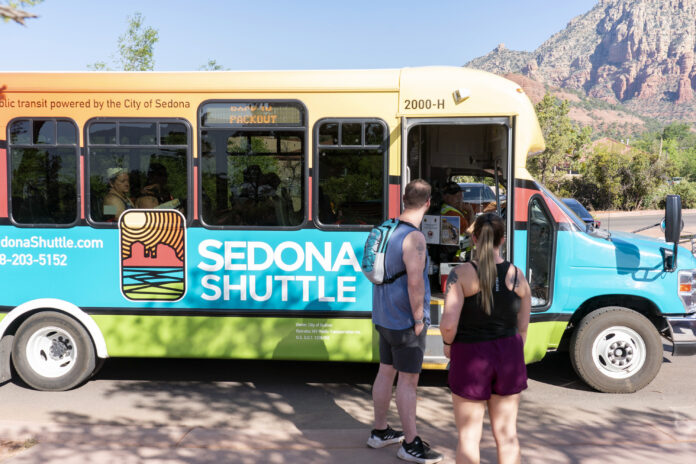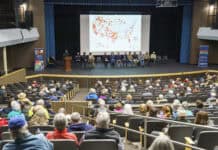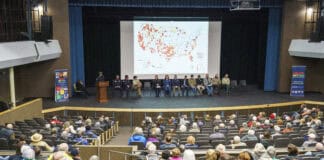
The Sedona Shuttle recently marked its first full year of operation, and the shuttle usage figures show that the system is operating on par with the national average.
The free shuttle takes hikers from three park-and-ride parking lots to five trailheads.
Boardings for March were down 25% compared to last year and boardings for April were down 11%.
The city reported that the shuttle saw 283,952 boardings during its first full year of operation, which would represent about 142,000 passengers — a hiker who boards at a parking lot and goes to a trailhead, then boards at the trailhead for ride back to a parking lot is counted as two boardings.
The month-by-month figures for boardings — a boarding is defined as someone who gets on a shuttle once — were:
- March 2022: 10,511
- April 2022: 44,309
- May 2022: 23,902
- June 2022: 17,256
- July 2022: 13,471
- August 2022: 11,589
- September 2022: 18,836
- October 2022: 26,359
- November 2022: 23,867
- December 2022: 23,325
- January 2023: 20,009
- February 2023: 18,090
- March 2023: 48,619
- April 2023: 55,075
- Total: 355,218
The sharp decrease in the number of boardings from March and April of 2022 to March and April of 2023 resulted from an expanded spring break schedule in 2023. In March 2022, the shuttle operated for only five days, thereby averaging 2,102 boardings per day; in March 2023, it operated every day and averaged 1,568 boardings per day. In April 2022, the shuttle ran for 18 days and averaged 2,462 daily boardings, while in April 2023, it ran for 25 days and averaged 2,203 daily boardings.
Based on the number of round trips made by each shuttle and the number of available seats, the shuttles were operating at 19.3% of capacity during their first year of service.
According to the 2022 Transportation Energy Data Book compiled by Oak Ridge National Laboratory, the average passenger load for buses was 7.5 passengers. The Federal Transit Administration has found that the typical transit bus has a seating capacity of around 40, meaning it will operate, on average, at 19% capacity.
City communications manager Lauren Browne said that the actual cost of the program so far has been $710,125 for the purchase of the vehicles and $1,422,581 for operations. The operations cost did not include an additional $75,000 paid to the Sedona Chamber of Commerce for marketing the shuttles, bringing the total cost of the program to $2,207,706.
Based on the city’s numbers through April 2023, the shuttle’s per-passenger operating cost is estimated to be $12.43.
According to the Federal Transit Administration’s 2018 summary of transit trends, the average operating cost per passenger trip for buses is $4.90.


















